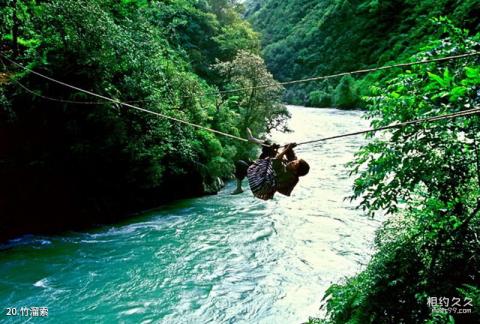
Introduction to the Bamboo Zipline: The Nujiang Grand Canyon and the Biluo Snow Mountain and Gaoligong Mountain on both sides are covered with mountains, dangerous rocks and steep cliffs. The water in the valley is fast and turbulent. Since ancient times, transportation here has been very inconvenient. As the saying goes, "the blue sheep have nowhere to go, and the monkeys are also worried." There are only a few ferries in the entire Nu River where the water flow is slightly gentle and can be ferried by wooden boats. Apart from these, bridges cannot be built or fords cannot be made in other places. The Nu people on both sides of the Taiwan Strait can only rely on ziplines, an ancient tool for crossing the river, to fly back and forth and maintain communication and contact with each other. The zipline is an indispensable and important transportation facility for the Nu people. The zipline was originally made by twisting bamboo strips into a wrist-thick rope, then pulling it across the river and fixing it to large trees, wooden piles or stone cliffs on both sides. People use slide boards (sliding bangs) as auxiliary tools and just slide through the air along the bamboo ropes. The slide is a channel-shaped hardwood that is seven or eight inches long and about four inches wide. There are two symmetrical long holes drilled on the back for tying ropes. When in use, the groove of the slide board is stuck on the zip line, a hemp rope or a leather strip is passed through the long hole, and it is firmly tied to the waist, and then the slide board is held in a supine position to slide down.
